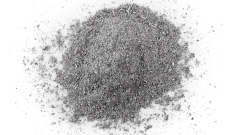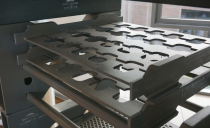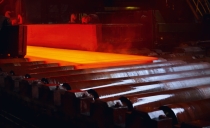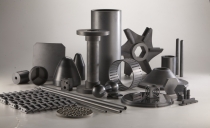
Comprendre la microstructure du nitrure de silicium
Les céramiques à base de nitrure de silicium (Si3N4) sont largement utilisées dans l'industrie en raison de leur grande résistance mécanique, thermique, à l'usure et au fluage. Par conséquent, ces céramiques continuent de faire l'objet de nombreuses études sur les matériaux haute performance, notamment l'optimisation des différentes phases de production.
Les matériaux céramiques offrent l'avantage d'un rapport résistance/poids élevé lorsqu'ils sont utilisés dans des applications structurelles. Afin de contrôler la croissance des grains, le frittage à des températures supérieures à 1 700 °C est une méthode privilégiée.
Les céramiques à base de nitrure de silicium restent l'une des céramiques les plus performantes parmi les groupes d'oxydes et de non-oxydes. Saint-Gobain High-Performance Ceramics & Refractories possède une vaste expérience dans la fabrication de céramiques techniques compactes et hautement résistantes pour les applications industrielles les plus intensives.
Microstructure du nitrure de silicium
Le nitrure de silicium est un composé solide qui peut être formé par réaction directe entre le silicium et l'azote. Il se présente sous trois phases distinctes caractérisées par leur structure cristalline, à savoir :
- Les phases α et β, qui sont les plus courantes, présentent des structures cristallines hexagonales (SiN4 tétraédrique à coins partagés avec des liaisons Si-N fortes, ce qui donne un réseau 3D rigide et stratifié). Ces deux phases sont synthétisées à pression normale ; la phase α se forme à basse température, la transition vers la phase β se produisant entre 1 400 °C et 1 600 °C.
- La phase γ, qui ne se forme qu'à haute température et haute pression.
Additifs de frittage
Le frittage est un procédé de traitement thermique couramment appliqué aux poudres. Afin de contrôler la formation de microstructures, c'est-à-dire la formation de structures à liaison covalente qui confèrent leur résistance aux matériaux, l'ajout d'additifs de frittage pendant la production est essentiel. Les oxydes de terres rares et métalliques tels que l'oxyde d'yttrium (Y2O3) et l'oxyde d'aluminium (Al2O3) sont des additifs de frittage courants.
Une étude a permis d'observer que :
- Malgré des augmentations fractionnaires de β-Si3N4 (de 7,67 à 57,34 % en poids) pendant la transformation initiale de la phase α en phase β, la taille moyenne des grains et la dureté (environ 20 GPa) restent inchangées. Par la suite, les grains adoptent une structure en forme de tige accompagnée d'une augmentation substantielle de la résistance à la rupture (de 3,36 à 7,11 MPaM1/2).
- Au cours de la deuxième étape de frittage, le β-Si3N4 atteint 100,00 % en poids, ce qui s'accompagne d'une augmentation rapide de la taille des grains. Il en résulte une augmentation fractionnaire de la ténacité à la rupture (de 7,11 à 7,61 MPaM1/2) contre une réduction notable de la dureté (de 20 GPa à 16,80 GPa).
Il a été démontré que l'introduction d'une deuxième phase à haute dureté, telle que le carbure de silicium (SiC), le carbure de titane (TiC) ou le nitrure de titane (TiN), améliore la résistance à la rupture et la dureté des matériaux techniques en nitrure de silicium. Cela montre que les céramiques à microstructure bimodale (phases α et β) peuvent être adaptées pour la production de matériaux aux performances optimales.
Propriétés du nitrure de silicium
La dureté des matériaux avancés en nitrure de silicium est linéairement proportionnelle à leur résistance. Comme mentionné précédemment, les propriétés mécaniques peuvent être considérablement améliorées grâce à l'introduction d'additifs de frittage. Dans les applications industrielles, les outils en nitrure de silicium présentent des performances de coupe supérieures sur des matériaux tels que la fonte ductile, la fonte malléable et la fonte grise en raison de leurs excellentes propriétés mécaniques à haute température.
Dans une autre étude, les matériaux céramiques en carbure de silicium comprenant 1 % en poids de Co et 10 % en poids de WC ont affiché des performances optimales à une température de frittage de 1 650 °C, atteignant une résistance à la rupture de 7,26 MPaM1/2, une résistance à la flexion à température ambiante de 1 132 MPa et une dureté de 16,96 GPa. De plus, la microstructure n'a présenté aucune croissance anormale. Les matériaux en nitrure de silicium produits par Saint-Gobain présentent :
- Une résistance à la flexion supérieure (850 MPa)
- Une ténacité à la rupture élevée (7 MPaM1/2)
- Une faible densité (3,17 g/cm3)
En adaptant les compositions et les paramètres de frittage, les matériaux en nitrure de silicium résistants aux hautes températures peuvent être utilisés dans un large éventail d'applications industrielles.
Applications des céramiques en nitrure de silicium
Les céramiques en nitrure de silicium combinent des propriétés thermiques, mécaniques et chimiques supérieures pour une large gamme d'applications industrielles, surpassant les performances des métaux et des polymères. Le pressage isostatique à chaud (HIP) et le frittage par plasma à étincelles (SPS) sont des méthodes couramment utilisées dans la production commerciale de matériaux en nitrure de silicium.
En raison de leur haute résistance et de leur ténacité à la rupture, ainsi que de leur résistance supérieure à l'oxydation, à la corrosion et à l'usure, les céramiques à base de nitrure de silicium sont envisagées pour une large gamme d'applications structurelles dans certains des environnements d'exploitation les plus difficiles dans les domaines de l'aérospatiale, de l'automobile, du pétrole et du gaz, entre autres, notamment :
- Dispositifs d'alimentation de nouvelle génération.
- Rotors de turbocompresseurs.
- Surfaces à l'intérieur des pompes (telles que les joints, les roues, les arbres).
- Composants de la face d'étanchéité (dans les pompes à eau sous pression, les pompes de réacteurs à eau bouillante, etc).
- Composants de moteurs diesel.
- Moteurs à turbine à gaz.
Céramiques en nitrure de silicium par Saint-Gobain
Grâce à sa maîtrise approfondie des complexités liées à la fabrication de matériaux haute performance, Saint-Gobain High-Performance Ceramics & Refractories produit des céramiques en nitrure de silicium de haute qualité, pressées à chaud et frittées, qui ne nécessitent qu'un minimum de finition après production.
Contenu similaire
Systèmes pour fours
Découvrez la gamme complète de produits et solutions céramiques de Saint-Gobain Performance Ceramics & Refractories - conçue, développée et fabriquée pour...
Solution complète de brûleurs pour l’efficacité énergétique et la réduction...
Découvrez la vaste gamme de solutions complètes de brûleurs de Saint-Gobain Performance Ceramics & Refractories pour les applications de chauffage...
Céramiques de spécialité
La vaste gamme de produits céramiques de spécialité de Saint-Gobain Performance Ceramics & Refractories, idéale pour une utilisation dans les...


